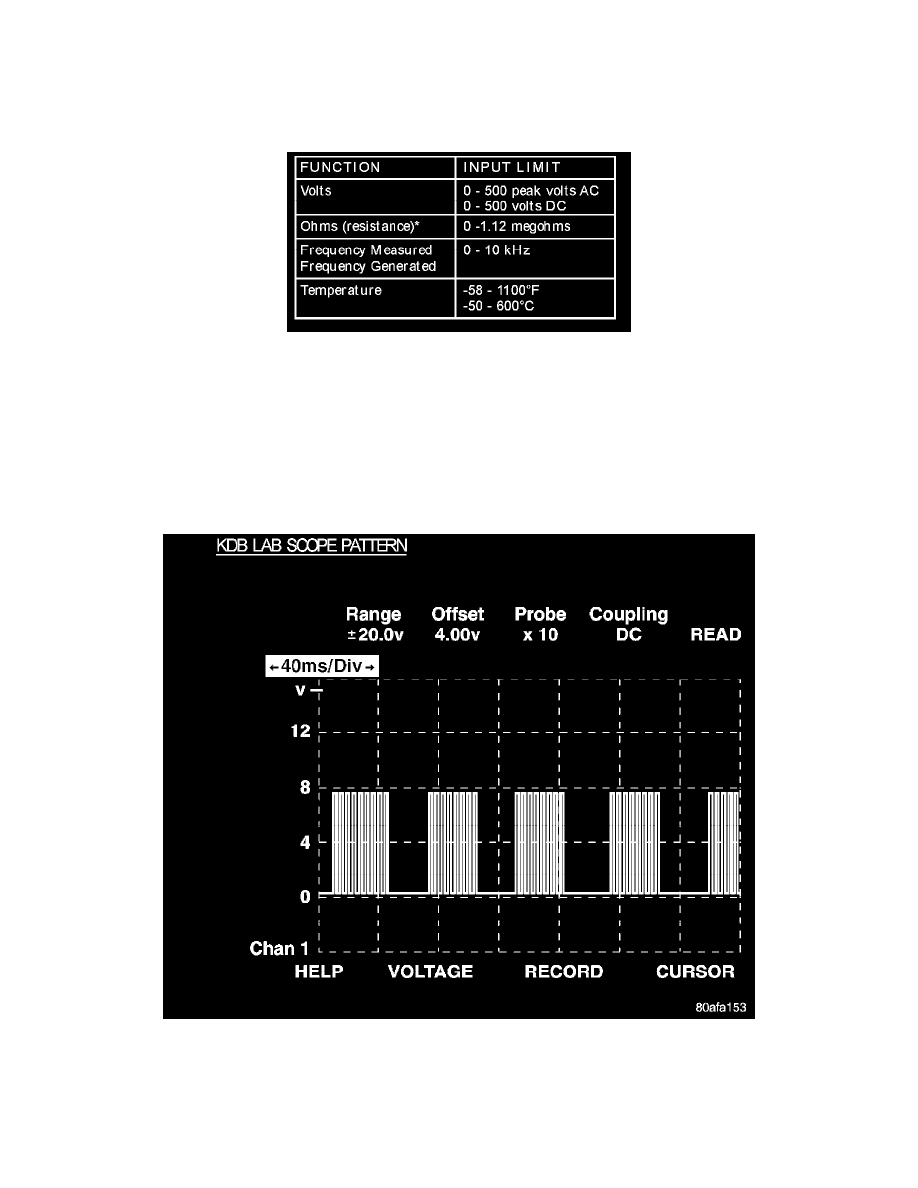Grand Caravan V6-3.3L VIN R (2005)

-
Follow the vehicle manufacturer s service specifications at all times.
-
Do not use the DRBIII(R) if it has been damaged.
-
Do not use the test leads if the insulation is damaged or if metal is exposed.
-
To avoid electrical shock, do not touch the test leads, tips, or the circuit being tested.
-
Choose the proper range and functions for the measurement. Do not try voltage or current measurement that may exceed the rated capacity.
-
Do not exceed the limits shown in the table below:
*Ohms cannot be measured if voltage is present. Ohms can be measured only in a non-powered circuit.
-
Voltage between any terminal and ground must not exceed 500v DC or 500v peak AC.
-
Use caution when measuring voltage above 25v DC or 25v AC.
-
Use the low current shunt to measure circuits up to 10A. Use the high current clamp to measure circuits exceeding 10 A.
-
When testing for the presence of voltage or current, make sure the meter is functioning correctly. Take a reading of a known voltage or current
before accepting a zero reading.
-
When measuring current, connect the meter in series with the load.
-
Disconnect the live test lead before disconnecting the common test lead.
-
When using the meter function, keep the DRBIII(R) away from spark plug or coil wires to avoid measuring error from outside interference.
KDB Lab Scope Pattern
